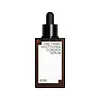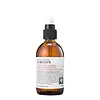What's inside
What's inside
 Key Ingredients
Key Ingredients

 Benefits
Benefits

 Concerns
Concerns

No concerns
 Ingredients Side-by-side
Ingredients Side-by-side

Water
Skin ConditioningDiglycerin
HumectantPolyglycerin-3
HumectantButylene Glycol
HumectantGlycerin
Humectant1,2-Hexanediol
Skin ConditioningHouttuynia Cordata Powder
Skin ConditioningTrehalose
HumectantAcrylates/C10-30 Alkyl Acrylate Crosspolymer
Emulsion StabilisingSodium Hyaluronate
HumectantPropanediol
SolventPolyglyceryl-10 Laurate
Skin ConditioningAllantoin
Skin ConditioningSodium Citrate
BufferingEthylhexylglycerin
Skin ConditioningCitric Acid
BufferingXanthan Gum
EmulsifyingGlyceryl Acrylate/Acrylic Acid Copolymer
HumectantDisodium EDTA
Pvm/Ma Copolymer
Emulsion StabilisingHydroxypropyltrimonium Hyaluronate
Sodium Acetylated Hyaluronate
HumectantHydrolyzed Hyaluronic Acid
HumectantHyaluronic Acid
HumectantSodium Hyaluronate Crosspolymer
HumectantHydrolyzed Sodium Hyaluronate
Skin ConditioningPotassium Hyaluronate
Skin ConditioningWater, Diglycerin, Polyglycerin-3, Butylene Glycol, Glycerin, 1,2-Hexanediol, Houttuynia Cordata Powder, Trehalose, Acrylates/C10-30 Alkyl Acrylate Crosspolymer, Sodium Hyaluronate, Propanediol, Polyglyceryl-10 Laurate, Allantoin, Sodium Citrate, Ethylhexylglycerin, Citric Acid, Xanthan Gum, Glyceryl Acrylate/Acrylic Acid Copolymer, Disodium EDTA, Pvm/Ma Copolymer, Hydroxypropyltrimonium Hyaluronate, Sodium Acetylated Hyaluronate, Hydrolyzed Hyaluronic Acid, Hyaluronic Acid, Sodium Hyaluronate Crosspolymer, Hydrolyzed Sodium Hyaluronate, Potassium Hyaluronate
Water
Skin ConditioningAlcohol
AntimicrobialButylene Glycol
HumectantHouttuynia Cordata Extract
Skin ConditioningSodium Lactate
BufferingPEG-60 Hydrogenated Castor Oil
EmulsifyingSophora Japonica Flower Extract
Skin ProtectingAzelaic Acid
BufferingAspergillus/Saccharomyces/Rice Ferment Filtrate
HumectantSalicylic Acid
MaskingLactic Acid
BufferingBis-PEG-18 Methyl Ether Dimethyl Silane
EmollientPPG-1-PEG-9 Lauryl Glycol Ether
EmulsifyingCoceth-7
EmulsifyingHydroxyethylcellulose
Emulsion StabilisingPanthenol
Skin ConditioningAllantoin
Skin ConditioningSodium Hyaluronate
HumectantPEG-40 Hydrogenated Castor Oil
EmulsifyingGlycyrrhiza Glabra Root Extract
BleachingParfum
MaskingMelaleuca Alternifolia Leaf Oil
AntioxidantPhenoxyethanol
PreservativeWater, Alcohol, Butylene Glycol, Houttuynia Cordata Extract, Sodium Lactate, PEG-60 Hydrogenated Castor Oil, Sophora Japonica Flower Extract, Azelaic Acid, Aspergillus/Saccharomyces/Rice Ferment Filtrate, Salicylic Acid, Lactic Acid, Bis-PEG-18 Methyl Ether Dimethyl Silane, PPG-1-PEG-9 Lauryl Glycol Ether, Coceth-7, Hydroxyethylcellulose, Panthenol, Allantoin, Sodium Hyaluronate, PEG-40 Hydrogenated Castor Oil, Glycyrrhiza Glabra Root Extract, Parfum, Melaleuca Alternifolia Leaf Oil, Phenoxyethanol
Ingredients Explained
These ingredients are found in both products.
Ingredients higher up in an ingredient list are typically present in a larger amount.
Allantoin is a soothing ingredient known for its protective and moisturizingg properties. Because of this, it is often added to products with strong active ingredients.
Studies show higher concentrations of this ingredient can promote wound healing.
Though it can be derived from the comfrey plant, allantoin is produced synthetically for cosmetic products to ensure purity.
Learn more about AllantoinButylene Glycol (or BG) is used within cosmetic products for a few different reasons:
Overall, Butylene Glycol is a safe and well-rounded ingredient that works well with other ingredients.
Though this ingredient works well with most skin types, some people with sensitive skin may experience a reaction such as allergic rashes, closed comedones, or itchiness.
Learn more about Butylene GlycolSodium Hyaluronate is hyaluronic acid's salt form. It is commonly derived from the sodium salt of hyaluronic acid.
Like hyaluronic acid, it is great at holding water and acts as a humectant. This makes it a great skin hydrating ingredient.
Sodium Hyaluronate is naturally occurring in our bodies and is mostly found in eye fluid and joints.
These are some other common types of Hyaluronic Acid:
Learn more about Sodium HyaluronateWater. It's the most common cosmetic ingredient of all. You'll usually see it at the top of ingredient lists, meaning that it makes up the largest part of the product.
So why is it so popular? Water most often acts as a solvent - this means that it helps dissolve other ingredients into the formulation.
You'll also recognize water as that liquid we all need to stay alive. If you see this, drink a glass of water. Stay hydrated!
Learn more about Water